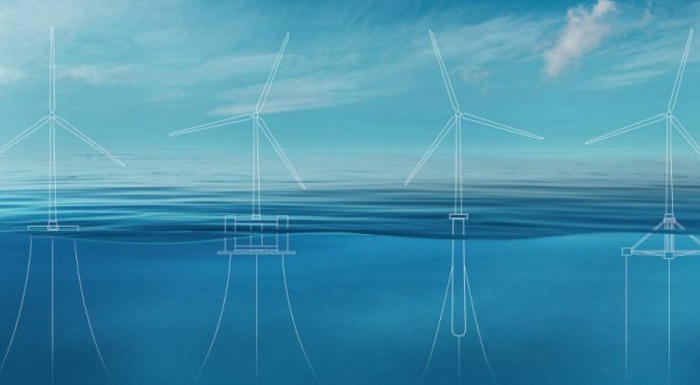Repsol and Ørsted have signed an agreement to identify and, where appropriate, jointly develop floating offshore wind projects in Spain. Both companies have the ambition to become together a leading developer in Spanish floating offshore wind by combining their strengths. The alliance will combine Repsol’s experience as a global multi-energy supplier and Ørsted’s experience as a world leader in offshore wind.
Renewable power generation is one of the pillars of Repsol’s decarbonization strategy. The company recently raised its installed capacity targets for 2030 to 20 GW, an increase of 60% compared to the previous target. By 2025, installed capacity will reach 6 GW.
In October 2021, Repsol increased its investment ambitions for low-carbon projects. Between 2021 and 2025, the Madrid-based multi-energy company will allocate an additional €1 billion to low-carbon projects, raising the total to €6.5 billion from the €5.5 billion set out in the strategic plan approved in November 2020. Moreover, in December 2019, Repsol became the first company in its sector to commit to carbon neutrality by 2050.
As the global leader in offshore wind, Ørsted brings three decades of experience in developing, constructing, operating and owning bottom-fixed offshore wind farms and was recently awarded its first floating offshore wind lease area off the coast of Scotland. Ørsted has a growing portfolio of onshore wind, solar and renewable hydrogen projects, and has an ambition of installing 50 GW renewable energy by 2030.
To date, Ørsted has installed approximately 13 GW of renewable energy capacity across offshore wind (7.6 GW), onshore wind (3.4 GW), and sustainable biomass (2.0 GW). Ørsted was recently ranked the world’s most sustainable energy company by Corporate Knights for the fourth consecutive time. The company recently set up office in Madrid.
After several years of concept development and small-scale testing, floating offshore wind is now on the brink of commercialization, and the global floating offshore wind market is expected to reach 21 GW of installed capacity by 20351. Spain is targeting 3GW floating offshore wind by 2030 and the country’s supply chain is well-prepared to enter floating offshore wind on the back of decades of experience from supplying to Spain’s massive fleet of onshore wind farms.
According to João Costeira, Executive Director of Low Carbon Generation at Repsol: “Having Ørsted, the world leader in offshore wind, as a partner positions us to be relevant in the future development of the floating technology, with which has growth potential on the Spanish coast and in which we already have experience thanks to our involvement in the Windfloat Atlantic project off the coast of Portugal.”
Martin Neubert, Deputy Group CEO and Chief Commercial Officer at Ørsted, says: “We’re excited to join forces with Repsol to explore floating offshore wind developments in Spain and to reaffirm our commitment to driving the commercialization of this technology, which will extend the reach of offshore wind by enabling installations further offshore and deeper at sea.”
According to Rasmus Errboe, Head of Region Continental Europe at Ørsted: “Spain is one of the world’s largest fleets of onshore wind and solar PV farms and by the end of this decade Spain will also be producing renewable energy at scale from floating offshore wind farms.We look very much forward to working with Repsol, the country’s leading energy provider, to help accelerate Spain’s transition to renewable energy while creating local jobs and investing in the Spanish supply chain.”





































